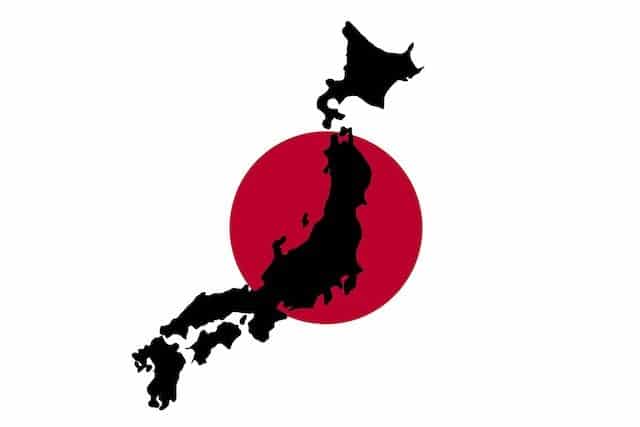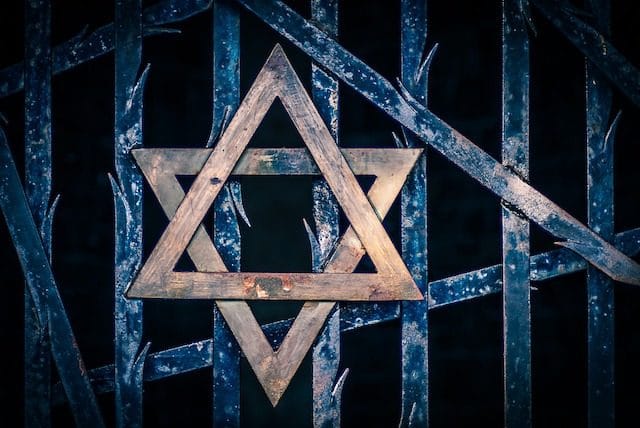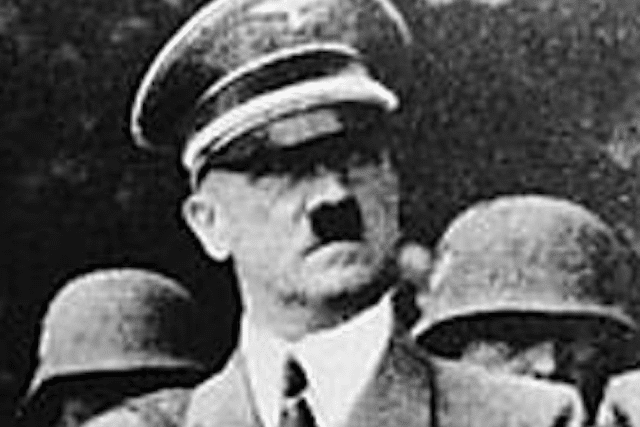World War I, or the Great War, started out as smaller scale conflicts amongst a hotbed of international hostilities and shifting alliances. While as famous as a conflict can get, World War I is often misunderstood or simply inadequately known. In this list, we share some of the most intriguing, downright shocking or just plain weird facts and happenings that define World War I as it happened.
10. Kaiser Wilhelm II was the Queen of England’s Grandson

It might come as a great shock for many people to realize that the official German head of state during World War I, Kaiser Wilhelm, was half English. Even more shocking, considering the nature of the conflict between the Central Powers and Allied Powers, it was particularly scandalous that this man, the figurehead in the German regime fighting in WWI, was no less than the grandson of the Queen of England, Queen Victoria! It is true that war can quickly lead to conflicting loyalties and blurring between military conflict and family conflict, and between international boundaries and familial lines.
Interestingly, the Queen had assisted in marrying her eldest daughter, who also held the name Victoria, in marrying the Prussian Prince William. Their son, Kaiser Wilhelm II, became the warmongering, anti-British German Emperor. The Kaiser’s English-born mother, Vicky–the daughter of Queen Victoria–expressed significant concern over the attitudes of the Kaiser in the time leading up to the First World War. Interestingly, the Kaiser suffered from nerve damage during a poorly handled birth that permanently paralyzed his arm. His mental state left much to be desired, including a burning obsession with military dominance.
9. Japan and Italy Sided with the Allied Powers

Japan and Italy might be well known participants in Axis combat in the Second World War, but a lesser known fact is that Japan and Italy fought on the side of the Allied Powers in World War I. The Kingdom of Italy was a combatant nation in the Great War that never became involved in violence on the side of the Central Powers despite prior agreements to support the Central Powers. Instead, for a time, the Kingdom of Italy remained neutral, having entered the pre-war Triple Alliance with Austria-Hungary and Germany. Then, Italy made the decision to join the war on the side of the Allied Powers in 1915 as an outcome of the Treaty of London. This action was not a popular one.
It was made in spite of increasingly vociferous anti-war protests from many members of the Italian public, who saw war as a greatly unwanted occurrence that would serve only to bring a negative outcome for the country overall. Japan might at first seem to be well out of the way in the European theater, but the fact is the Japanese headed far west and even defended British shipping in the Mediterranean. German operations in the Indian Ocean and the West Pacific were significantly hindered by Japanese actions, curbing the sweep of the roving Imperial German Navy.
8. Urine Soaked Handkerchiefs Mitigated Gas

World War I was not just a war where mechanical means of fighting were advanced, with air battles between planes standing out prominently. World War I was also the war of the chemical weapon, revolutionizing attacks through chemistry. After the turning point where German forces used chlorine gas on April 22, 1915 at Ypres, Belgium, poison gas attacks became definitive elements of the conflict. From that day onward, poison gas was used to devastating effect in World War I by both the Central Powers and the Allied Powers. The use of chemical warfare showed the dangers of high-tech chemical engineering and led to profound legal considerations on what constituted acceptable bounds of wartime conduct.
Chlorine gas attacks caused burns and could inflict blindness, but despite the advancement, a means of addressing deadly gas attacks was decidedly low tech and biological in nature. Holding urine-soaked cloths to the face provided a crude, but better-than-nothing means of mitigating the effects of chlorine gas. Further development of gas masks offered a much greater level of protection, especially against more dangerous forms of gas attack. As the conflict progressed, the scale and variety of chemical weapon attacks grew, spurring intense efforts to design and manufacture proper gas masks.
7. Jewish Germans Proved Loyalty (and Got Betrayed)

The time of the Third Reich may have been a violent betrayal of Jewish Germans, but prior to the tyranny of the Hitler era that sparked World War II hostilities in Europe, German Jews went above and beyond in efforts to show loyalty to their Fatherland. In the time of World War I, anti-Semitism was already an ever-present reality and many Jewish Germans wanted to show loyalty to their country through action. Sadly and ironically, Jewish air aces and other prominent Jewish veterans of WWI were treated violently and swept under the rug as their achievements starkly contrasted with the lie-filled hate speech of Nazi rhetoric.
In the wake of Germany’s loss in World War I, Jewish Germans were targeted as scapegoats. While some German Jews received acknowledgement under the Nazi regime for past contributions in WWI, the overall treatment of Germany’s WWI veterans by the National Socialist regime was exceptionally harsh. Formerly recognized combatants in WWI who were Jewish Germans were treated as enemies to be eliminated by the country they had served. Even high scoring German Jewish fighter pilots, including aces from WWI who had received decorations with the utmost recognition, were removed from war records under the fanatical Nazi regime, as in the case of ace pilot Fritz Beckhardt, also arrested and imprisoned for his relations with his non-Jewish wife. Others were sent to die in concentration camp conditions, as in the case of observer and gunner Berthold Guthmann.
6. The Christmas Truce

World War I was defined as a conflict of exceptional violence, scale, and novelty of awful new weapons and tactics used to obliterate enemy troops. Yet amongst the chaos, an unusual Christmas Truce took place, notably starting between British, French, and German troops in 1914, as combatants took initiative to celebrate Christmas and exchange greetings. Small talk was made, while different degrees of what came to be called “fraternization” took place along the Western Front. In some locations, talks, trading, and singing of Christmas songs occurred, while less friendly truces at other conditions included simply ceasing fire and giving each side the opportunity to go about retrieving and burying their dead.
Holiday season games were pursued amongst ceasefire conditions, while barter offered conveniences and comfort. In other instances, amidst the growing violence of World War I, killing was avoided by warring parties who took a “live and let live” approach that saw enemy soldiers declining to attack each other. Despite the faint hopes of peace that seemed to be presented by soldiers who simply didn’t kill each other, the fate of World War I was to get worse. Crackdowns on fraternization followed, with failure of a truce to take place in Christmas of 1915.
5. British Tanks were Gendered

Machines are often given human names to lend nostalgia, nuance, or a touch of fond personalization. An entire model might be given a name, or an individual machine such as a boat or plane or can be named. Yet it might come as an amusing surprise amongst the ghastly nature and unprecedented mechanization of World War I that Mark 1 British tanks were gendered as male tanks or female tanks in how they were described. The naming difference in British tanks was also not random. With the different gender labeling options there came a profound difference in tank armament.
The male tanks were armed with heavier weapons, while female tanks came equipped only with machine guns. Between the two types of machine, short work could be made of enemy forces. “Male” Mark 1 tanks equipped with a genuinely terrifying pair of 6-pound guns plus four machine guns were considered male tanks in their classification. In contrast, “Female” Mark 1 tanks came with six machine guns. The male tanks that boasted the long barrel 6-pound guns experienced some difficulties due to the ungainly length of the barrels. To resolve these operational challenges, male tanks were eventually set up with short barrel six-pound guns.
4. Hitler’s Mustache Explained

Associated with rambling hate speech and authoritarianism while being a widespread subject of ridicule, the notorious toothbrush mustache displayed by Austrian immigrant-turned-German National Socialist Worker’s Party leader Adolf Hitler has a surprising history and origin. It might come as a surprise to many students of wartime history, but the toothbrush mustache of Adolf Hitler—made notorious through countless photo depictions–was originally much larger, being formed as a more typical mustache. The distinctive shape of the mustache came about because of the need for the future malfeasant to wear a gas mask in battle. In order to fit a protective gas mask, Hitler’s full mustache had to be trimmed to shape.
During the hostilities of World War I, Hitler was involved in a gas attack where he received injuries that included temporary blindness. Evidently the horrors of gas attacks did nothing to give the future dictator second thoughts about systematically commissioning the gassing of his personally declared enemies and the millions of innocent victims he sought to eliminate. The account of Hitler’s mustache being trimmed into the compact toothbrush shape is depicted with some cinematic licence in History channel’s Emmy-nominated miniseries The World Wars.
3. Germany Tried to Provoke a Mexican Attack on the USA

World War I spanned an incredible range of countries around the globe as it spread in scope and scale. Increasing agitation and provocation were among the reasons for the mad growth of the conflict. One of the most unusual and little-known plots of World War I unfolded as Germany attempted to rile Mexico into attacking the United States and taking the states of New Mexico, Arizona, and Texas. The plan ultimately did not unfold but the attempt to stir further battlefields into action succeeded in further highlighting the deadly threat of the virulent spread of global hostilities and provocation.
In what was known as the Zimmermann Telegram, German foreign secretary Arthur Zimmermann contacted German Ambassador Heinrich von Eckardt, outlining a proposal for Mexico to accept financial assistance for war from Germany, and then embark on a plan to take US territory and expand Mexico’s borders. The Mexican president requested government evaluation of the offer, but in the end, refused it. The offer became part of US justification for war against Germany. The effort to essentially sponsor a bordering country to engage in war constituted a threat to American national security that was far too close to home.
2. Chinese Labor Corps Deployed in Europe

During World War I, the sheer scale and mechanization of fighting meant that wartime operations were messy and technically challenging. Explosions, deaths, and generally catastrophic conditions of all kinds necessitated lots of work to address the damage. At the same time, preparations of supplies, munitions, and wartime infrastructure including trenches, sandbags, delivery routes, and artillery positions took a great deal of staffing to accomplish. The Chinese Labor Corps from rural parts of China offered their services and played a notable role in equipping, organizing, and cleaning up the practical aspects of wartime operations on the Western Front.
Building roads, loading trains and boats,and burying the dead were some of the projects in which these workers engaged. Unfortunately, the workers were paid very little for their hardworking contributions and suffered many losses among their crews during the Spanish Flu epidemic. A significant number of the workers were from the coastal province of Shandong in Eastern China. Some of the workers were well educated. Chinese engineers operated the Tank Corps Central Workshops in France. A lack of awareness of contributions from the approximately 140,000 Chinese workers who provided valuable services in World War I has begun to be addressed through written accounts and monument construction.
1. Child Soldiers Fought for Britain
Child soldiers might seem like a horror of “Third World” militias under a dysfunctional military dictatorship or a rogue cult. Yet the First World War led to a strange circumstance where Britain saw a shocking 250,000 combatants who were mere boys, many well under the legal age of combat service of 19 years, serving their country. Of these young people, a number served with dedication and bravery–many going to their deaths. While one might wonder how such an occurrence could happen with supposed protections in place, it was, in fact, quite easy.
Without modern documentation rigor such as birth certificates and a reliance on medical exams, instead of reliable documents attesting to the age of candidates it was possible to lie one’s way into active combat service. Wartime propaganda helped to stir up some extra desire to fight, even among those who were legally too young. Seeing the urgency of wartime affairs and perhaps having an extra dose of youthful bravado meant that those without very much knowledge or experience would rush in to get involved. Parental or community supervision was not always helpful, either. Members of parliament, headmasters, and even parents were complicit in many underage service sign-ups.